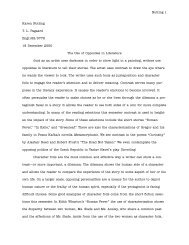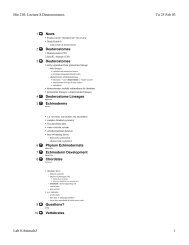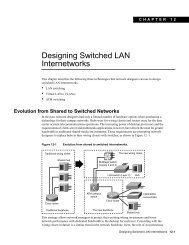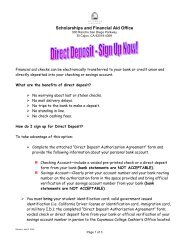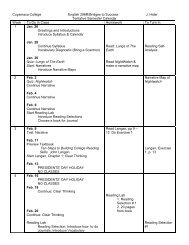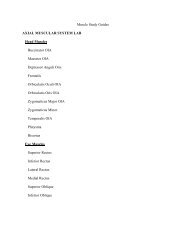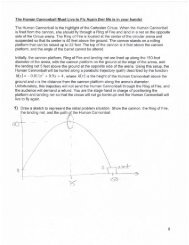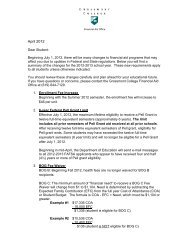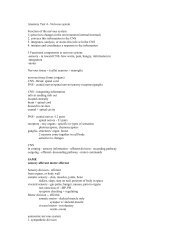Create successful ePaper yourself
Turn your PDF publications into a flip-book with our unique Google optimized e-Paper software.
Now lets see if there is a match between the destination IP address of the packet, 192.168.1.10, and thenext route in the routing table, 192.168.1.0/24, an ultimate route.R 192.168.1.0/24 [120/1] via 172.16.2.2, 00:00:00, Serial0<strong>The</strong> route, 192.168.1.0, is an ultimate route, so it also contains the subnet mask, /24. For this route to bea match with our destination IP address, there must be a minimum match of at least 24 of the left mostbits (the mask of the route). In Figure 3, we can see that this is a match!Figure 3IP Packet 192.168.1.10 11000000 10101000 00000001 00001010<strong>The</strong>se 24 bits match!UltimateRoute 192.168.1.0 11000000 10101000 00000001 00000000Not only does the minimum of 24 bits match, the subnet mask in the ultimate route, but actually, a total of28 bits match as we can see in Figure 4. Is this important? As we will see later it can be when there aremultiple matching routes in the routing table for the same destination IP address. Which one is the bestroute? <strong>The</strong> route with the most matching bits, i.e. the longest-bit-match. But as we said, we will discussthis later.Figure 4IP Packet 192.168.1.10 11000000 10101000 00000001 00001010<strong>The</strong>se 28 bits match!UltimateRoute 192.168.1.0 11000000 10101000 00000001 00000000Reviewing the steps for the Route Lookup Process:Step 1. <strong>The</strong> router begins by finding a network route, ultimate or parent that matches the IP packet’sdestination address.Step 2. If the matching network is an ultimate route (not including subnet routes), and there are no morespecific routes, this is the route used to forward the packet.We can see that in Step 1, there is a match with an ultimate or parent route. In Step 2, the match is withan ultimate route and there are no more specific matches (longer-bit-matches), so the end result is therouting table process will use this ultimate route of 192.168.1.0/24 with an exit interface of Serial0 toforward the packet with the destination IP address of 192.168.1.10. (Figure 5).Figure 5RouterA#show ip routeCodes: C - connected, S - static, I - IGRP, R - RIP, M - mobile, B - BGPGateway of last resort is not set172.16.0.0/24 is subnetted, 3 subnetsC 172.16.1.0 is directly connected, FastEthernet0C 172.16.2.0 is directly connected, Serial0R 172.16.3.0 [120/1] via 172.16.2.2, 00:00:00, Serial0R 192.168.1.0/24 [120/1] via 172.16.2.2, 00:00:00, Serial0RouterA#6



